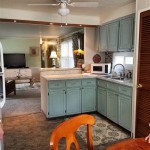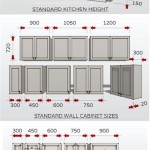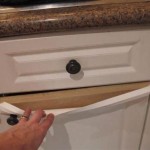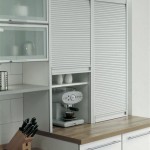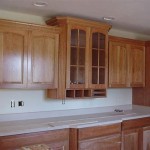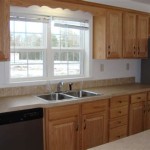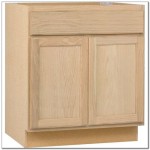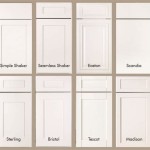```html
How Much Should I Charge to Hang Kitchen Cabinets?
Determining the appropriate pricing for kitchen cabinet installation involves a multifaceted analysis, factoring in variables from regional labor costs to the complexity of the project. Underpricing can lead to financial losses, while overpricing can deter potential clients. A thorough understanding of cost components and market dynamics is crucial for establishing a competitive and profitable rate.
Kitchen cabinet installation is a specialized trade that requires precision, skill, and a comprehensive understanding of construction principles. Accuracy in leveling, securing cabinets to wall studs, and ensuring proper alignment are paramount for both functionality and aesthetics. Therefore, the pricing structure should reflect the expertise required and the potential risks associated with subpar installation, such as cabinet failures or structural damage.
Several methods exist for pricing kitchen cabinet installation projects. These include hourly rates, per-cabinet charges, and flat project fees. Each approach has its advantages and disadvantages, depending on the scope and complexity of the job. Understanding these pricing models and their suitability for different project types is essential for accurate cost estimation.
Key Point 1: Factors Influencing Kitchen Cabinet Installation Costs
Numerous factors contribute to the overall cost of hanging kitchen cabinets. A detailed assessment of these variables is necessary for calculating a fair and accurate price.
Scope of the Project: The size and complexity of the kitchen directly impact the installation cost. A large kitchen with numerous cabinets, islands, and custom features will naturally require more labor and materials than a smaller, simpler kitchen. Consider the number of upper cabinets, lower cabinets, pantry cabinets, and any specialized units like corner cabinets or wine racks.
Cabinet Type and Material: The type of cabinets being installed plays a significant role. Stock cabinets typically require less preparation and customization, while semi-custom or fully custom cabinets may necessitate adjustments or modifications to fit the space perfectly. The material of the cabinets also influences the installation process. Solid wood cabinets, for example, are heavier and may require additional support compared to cabinets made from particleboard or MDF.
Kitchen Layout and Design: The existing kitchen layout and the proposed design impact the installation process. Uneven walls, plumbing obstructions, electrical wiring, and the presence of soffits can complicate the installation and increase labor costs. A complex layout with tight corners, islands, or peninsulas requires more meticulous planning and execution.
Removal of Existing Cabinets: If the project involves removing existing cabinets, the associated labor and disposal fees must be factored into the overall cost. The removal process can be time-consuming, especially if the old cabinets are heavily attached or require careful dismantling to avoid damage to the surrounding walls.
Necessary Preparatory Work: Before installing new cabinets, it may be necessary to perform preparatory work such as patching walls, leveling floors, or relocating electrical outlets or plumbing fixtures. These tasks add to the overall project cost and should be clearly outlined in the estimate.
Hardware and Accessories: The type of hardware and accessories being installed can also influence the cost. High-end handles, knobs, drawer slides, and soft-close mechanisms can add to the material expenses. Additionally, installing under-cabinet lighting, pull-out shelves, or other specialized features requires additional labor and expertise.
Travel Time and Location: The distance to the job site and the geographic location can impact the pricing. Travel time increases labor costs, and areas with higher cost-of-living tend to have higher labor rates. Consider including travel expenses or adjusting the hourly rate based on the location of the project.
Key Point 2: Pricing Models for Kitchen Cabinet Installation
Selecting the appropriate pricing model is crucial for ensuring profitability and attracting clients. Each model has its strengths and weaknesses, depending on the project characteristics.
Hourly Rate: Charging an hourly rate is a common approach, particularly for smaller projects or projects with uncertain timelines. The hourly rate should reflect the installer’s experience, skill level, and regional market rates. Carefully track the time spent on the project, including travel time, preparation, installation, and cleanup. Hourly rates typically range from $50 to $100 per hour, but this can vary significantly based on location and expertise.
Per-Cabinet Charge: This method involves charging a fixed price for each cabinet installed. The price per cabinet should be based on the type of cabinet, its size, and the complexity of the installation. For example, installing a standard upper cabinet might cost less than installing a large pantry cabinet with multiple shelves and drawers. Per-cabinet charges usually range from $100 to $300 per cabinet, but can be higher for custom or complex installations.
Flat Project Fee: A flat project fee involves providing a single, fixed price for the entire kitchen cabinet installation project. This approach requires a thorough understanding of the scope of the project and accurate estimation of all costs, including labor, materials, and overhead. While a flat fee provides price certainty for the client, it also carries the risk of underestimating costs if unforeseen issues arise. This model is suitable for projects with well-defined scope and minimal uncertainty.
Material Costs: It's crucial to consider whether the price includes materials or if those are invoiced separately. Some installers prefer to purchase materials (screws, shims, caulk, etc.) and add a markup to the cost, while others might prefer the homeowner to purchase them. The agreement about materials needs to be clear from the start.
Markup on Materials: If supplying the materials, adding a markup on the materials is standard practice to cover handling and procurement costs. A typical markup ranges from 10% to 20% above the cost of the materials.
Key Point 3: Competitive Pricing and Market Research
Establishing competitive pricing requires understanding the local market and the rates charged by other installers. Market research helps identify prevailing rates and allows for strategic pricing adjustments.
Research Local Market Rates: Investigate the rates charged by other kitchen cabinet installers in the area. Online platforms, contractor directories, and referrals from previous clients can provide valuable insights into the prevailing market rates. Consider factors such as experience, reputation, and the quality of workmanship offered by competitors.
Consider Your Overhead Costs: Overhead costs include expenses such as insurance, vehicle maintenance, tools, advertising, and office supplies. These costs must be factored into the pricing to ensure profitability. Calculate the total overhead costs and allocate them proportionally across all projects. Failing to account for overhead can lead to underpricing and financial losses.
Value Proposition: Emphasize the value provided to clients. This may include superior craftsmanship, attention to detail, clear communication, and a commitment to customer satisfaction. Highlight any unique skills or certifications that differentiate from competitors. A strong value proposition can justify a slightly higher price than competitors.
Provide Detailed Quotes: A comprehensive and transparent quote is essential for building trust with clients. The quote should clearly outline the scope of work, the materials being used, the pricing model, and any potential additional costs. Break down the costs into specific line items, such as cabinet removal, preparatory work, cabinet installation, and hardware installation. A detailed quote demonstrates professionalism and helps avoid misunderstandings.
Negotiation Strategies: Be prepared to negotiate the price with clients. Understand the bottom line and be willing to make concessions, such as offering a discount for a larger project or adjusting the scope of work to meet the client’s budget. However, avoid compromising on quality or profitability to win a bid. Effective negotiation skills can help secure projects while maintaining a fair and reasonable price.
Review and Adjust Pricing Regularly: Market conditions and operating costs can change over time. Regularly review and adjust the pricing to reflect these changes. Monitor competitor rates, track overhead costs, and assess the profitability of past projects. Adapting the pricing strategy ensures competitiveness and profitability in the long term.
Ultimately, determining the appropriate price for hanging kitchen cabinets is a balancing act between covering costs, ensuring profitability, and remaining competitive in the market. A thorough understanding of the factors influencing costs, the available pricing models, and the local market dynamics is essential for establishing a successful and sustainable pricing strategy.
```
How Much Does It Cost To Install Kitchen Cabinets Az Cabinet Company

What Is The Average Kitchen Cabinet Cost

Average Cost To Replace Cabinets Forbes Home

What Do Kitchen Cabinets Cost Tips To Stay In Budget

Kitchen Installation Cost 2024 Data

The Cost Of Kitchen Cabinets For Your New

Cost To Install Cabinet Hardware 2024 Data

How Much Does It Cost To Install Cabinets Labor Only Guelph Kitchen Renovations

Thinking Of Installing An Kitchen Here S What You Need To Know First

Kitchen Cabinets Costs 2024 Data Angi
Related Posts

